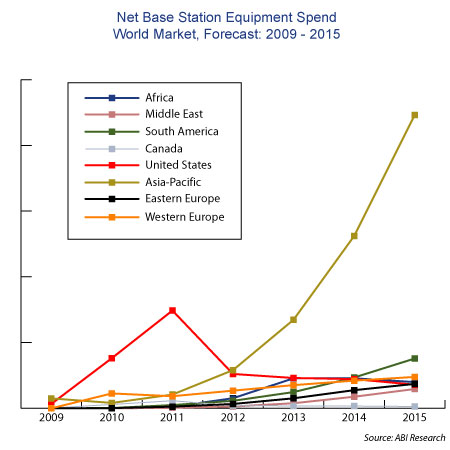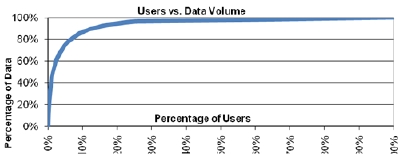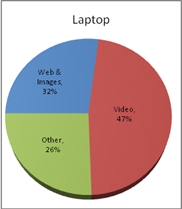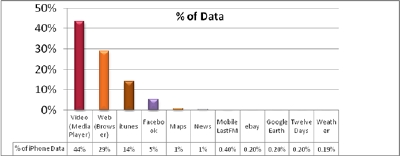Keith Dyer speaks to Monitise’s Chief Commercial Officer, Lee Cameron, about the development of mobile money services in 2011.
Keith Dyer:
Lee, our reader research for this issue has strongly identified mobile payments as “one to watch” for 2011. As a major player in the mobile payments industry, where do you think NFC stands at the moment?
Lee Cameron:
NFC has certainly been an interesting topic to follow. I think one way of placing it in context is to grasp that we have now entered a second, more market-focussed, stage of development.
Over the last few years there were over a hundred trials around the world that were mostly aimed at providing a technical proof of concept, and at gathering evidence of consumer interest. These trials served those dual purposes very well: although there are still some important technical issues that need to be addressed the basics are now clear, and the trials also provided strong proof of consumer interest in mobile payment and NFC services.
Now, however, the industry is focussing on planning more consumer-centric commercial deployments. These are taking the initial trial services and developing them into applications such as over the air personalisation and integrated banking systems and services. That’s a different level of operation.
Two examples of this more consumer-centric approach are the large scale European trials in Nice and Sitges that are taking place. We have also seen MicroSD emerge as an alternative to device and SIM-based NFC. Your readers may already know that we at Monitise are working with Device Fidelity in some big trials in the USA with US Bank, the fifth largest bank in the USA.
We’re also seeing developments in handsets. Nokia’s C7, for example, is an NFC handset that someone would actually want to have as their primary handset, rather than as an additional device to their “proper” handset.
Keith Dyer:
Do you think this recent progress means we are nearer to commercial deployments on a wider scale?
Lee Cameron:
I think there are various people who are looking at 2011 to offer some actual commercial deployments. These won’t be the things being talked about years ago – which was essentially the vision of your bank accounts all fully embedded in your phone. Instead, I think we will see more interesting and consumer-centric services that act on mobile a bit like the cash part of your wallet. Something like a pre-pay contactless wallet that is tap and go, emulating the coffee/newspaper/sandwich part of my wallet. And when that gets low I can reload that directly from my bank account, just as if I were extracting cash from an ATM. It is these sorts of consumer-centric propositions that will be really interesting.
However, in 2011 I don’t think we’ll be looking at a revolution, because there are simply not the point of sale terminals out there. In fact there are several such chicken and egg situations. First we will need a contactless card rollout to drive terminal deployments, for instance. That’s something that doesn’t involve the mobile industry at all yet it’s something the mobile industry could well rely on to drive contactless user behaviour. Secondly, there is still the issue of what the business case for retailers is going to be, what is the demand for tap and go at point of sale from the retailers’ point of view?
I think you also need to think about driving user behaviour on the handset. Think about day one after a user gets a new handset and it tells him it is enabled for, say, Visa/Oyster. He’s only going to use that for mobile payments if he has been using his mobile to manage his bank account beforehand. In that respect this will also be an evolutionary thing. Realistically, the user will first of all need to be used to mobile banking, and then we are in a position to ask him, or her, to consider putting a card in the back of his phone.
Parallel to that is the mobile industry roadmap. Although I said that the Nokia handset shows progress we still need more handsets, that people will want, with some sort of NFC capabilities. MicroSD has potential in that it does not require people to have to change handsets, and that opens up some interesting new models in itself.
Our principle in all this is that we cannot afford to have a religious position. We are a heterogeneous provider, and not tied to one model. We make sure that we can support all of these by being NFC ready and MicroSD ready – as evidenced by our deployment in the USA. Really, we see commercial deployment as a subset of mobile banking that we support with our banking relationships. Once we see contactless enabled phones, then we are in a position to enable that to happen.
Keith Dyer:
You mentioned mobile banking and readers will be aware of Monitise’s presence in the mobile banking market. What is the current scope of your activities, in terms of the markets you address and solutions you can support?
Lee Cameron:
We are the lead player globally in mobile banking and money, with active operations on all four continents. After a successful float on AIM (the UK’s Alternative Investment Market) in June 2007 we have three years as an independent entity behind us and have achieved a current market capitalisation of £159 million. When we listed on AIM all our investment was targeted to create a banking grade and secure mobile banking platform, so that we can offer a mechanism for banks and mobile operators to enter the mobile banking and payments market.
In terms of geographies we have seen more progress in the UK than anywhere else and have successful relationships with RBS, Lloyds TSB and HSBC, providing mobile banking services for their customers.
In the USA we have a joint venture with FIS, the largest bank processing company, with approximately 300 banks on the platform, giving smaller banks access to m-banking and payments services. In July 2010 we signed a joint venture (JV) in India with Visa. We are in the early stages of setting up that business, and fully expect to have payments services in India in 2011. We also have a JV in AsiaPacific with our partner First Eastern. That JV is headquartered in Hong Kong and we are looking for deployments in neighbouring areas.
There are also a number of global customer relationships. Our partnership with Visa is key, and is also our largest, and we also work with Travelex and Standard Chartered Bank. This global activity means we have a broad range of live payment services, and deployment really depends what the bank wants to launch as part of their service set.
Keith Dyer:
With that experience, how do you view how mobile operators can play in mobile banking and mobile payments? What role should they take?
Lee Cameron:
Our relationships with mobile network operators span a number of different levels, but they tend to be concentrated in terms of commercial working relationships, whilst we have contractual relationships with financial services companies and banks. We continue to talk to network operators and involve them in all spaces where they wish to launch.
I think generally there’s a much broader recognition now of the need for collaboration between banks and operators; there’s more acceptance of the need for a mobile collaborative approach.
Operators are aware now that once they have connected money to mobile phones, there are a lot of different things they can do. The activity we are best known for is in mobile banking, but that then enables mobile shopping, mobile wallets, M-Pesa style virtual accounts, stock trading. These are all about providing secure, bank grade connectivity —all characteristics of things we’re good at. The core principles that underpin mobile banking can enable other providers of mobile money services – and that of course includes the mobile operator.
Keith Dyer:
And Monitise’s own role in this market?
Lee Cameron:
We are very clear on that. Mobile money is not just about cramming web services onto a small screen – mobile has its own story, and is something that requires a mobile-centric approach.
To address that, we have a platform and a network. Our Globe platform has built into it everything a bank or operator needs to bring mobile money to the mass market, from services, to business logic, to handset support.
Our network provides a unique way for us to connect together the different players in mobile markets. People want to connect with the world around them through their mobiles, and to enable that we need to create an efficient infrastructure that builds on those connections. We have proved we can do that.









